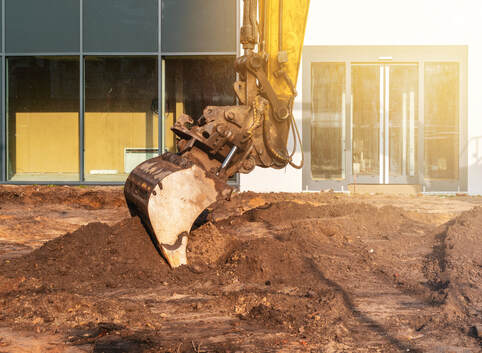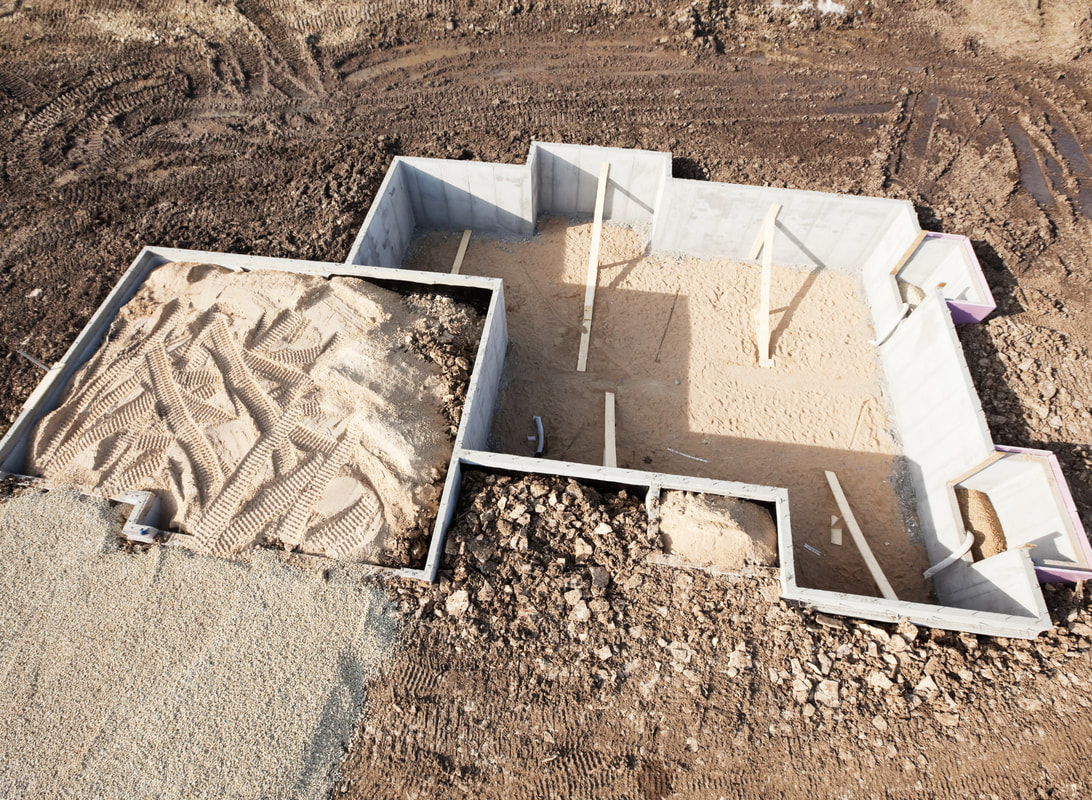Swimming Pool Excavation
The first step to excavating an in-ground pool is to inspect the soil on the property. It's important to evaluate the topsoil and ground for salts, pipes, wires, sand, clay, gavel, and organic matter that can make a difference in how the digging will be performed.
A backhoe is typically the first of the heavy equipment to be used to initiate the digging. The dirt collected from the digging will need to have a planned location for dispersion, either off-sight or piled in new areas of the yard for landscaping purposes. Once the process begins it can be quite a messy undertaking, and the client should be prepared for this. However, the dig for a pool is typically done in one day, or two for larger pools. There can be delays depending on the amount of rock, or unexpected obstacles and/or utility lines. Just remember, that our experienced pool contractors will have encountered lots of hurdles and challenges in pool construction, and have many solutions to the obstacles encountered. It's important to follow any instructions the contractor might have before excavation begins, to help the process flow smoothly. |
|
Basements | FoundationsBasements are commonly known as the bottom, underground, or first level of a housing and building. With the exception of above-ground daylight basements in some infrastructures. Forming a structure, whether it’s housing or commercial, must be built from the ground up. In addition to this, basement excavation needs to be done before the bottom level is developed.
Basement excavation needs to be partially underground when being roughed out in the planning phase. The complexity level worsens by the size and type of land. Without the proper experts for the job, the details can become messy once considering equipment like a track loader or excavator, depth of basement requirements, selections needed to be excavated, and other measurements. |
The foundation and basement portion of a structure is a vital part of the strength and withholding of the development. Without the proper provisions, the building can collapse from the top-down or from the bottom-up. The building has less probability to survive disastrous weather conditioning or aging of the frame support. With a weak basement upholding, property owners can expect cracking, folding or other various damages happening at possibly the worst times.
The excavation process is much larger than the actual basement measurements. Backfilling with concrete is applied after the digging and placements of the walls are completed.
Our excavation crew can deepen the area and dig lower into the earth for existing basements. Although the cost, ordinances, and timely pursuits for this process can be touch-and-go, having a deeper basement can be beneficial for a household in both constructional needs and spaciousness.
The excavation process is much larger than the actual basement measurements. Backfilling with concrete is applied after the digging and placements of the walls are completed.
Our excavation crew can deepen the area and dig lower into the earth for existing basements. Although the cost, ordinances, and timely pursuits for this process can be touch-and-go, having a deeper basement can be beneficial for a household in both constructional needs and spaciousness.

